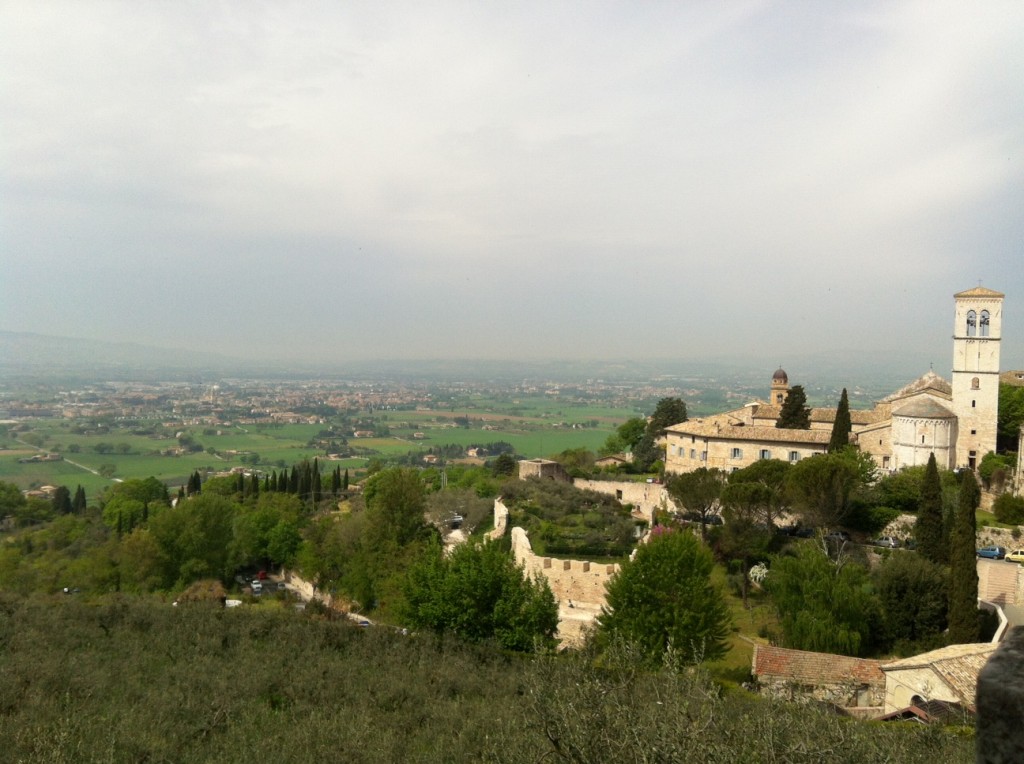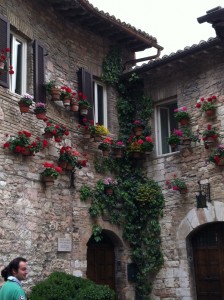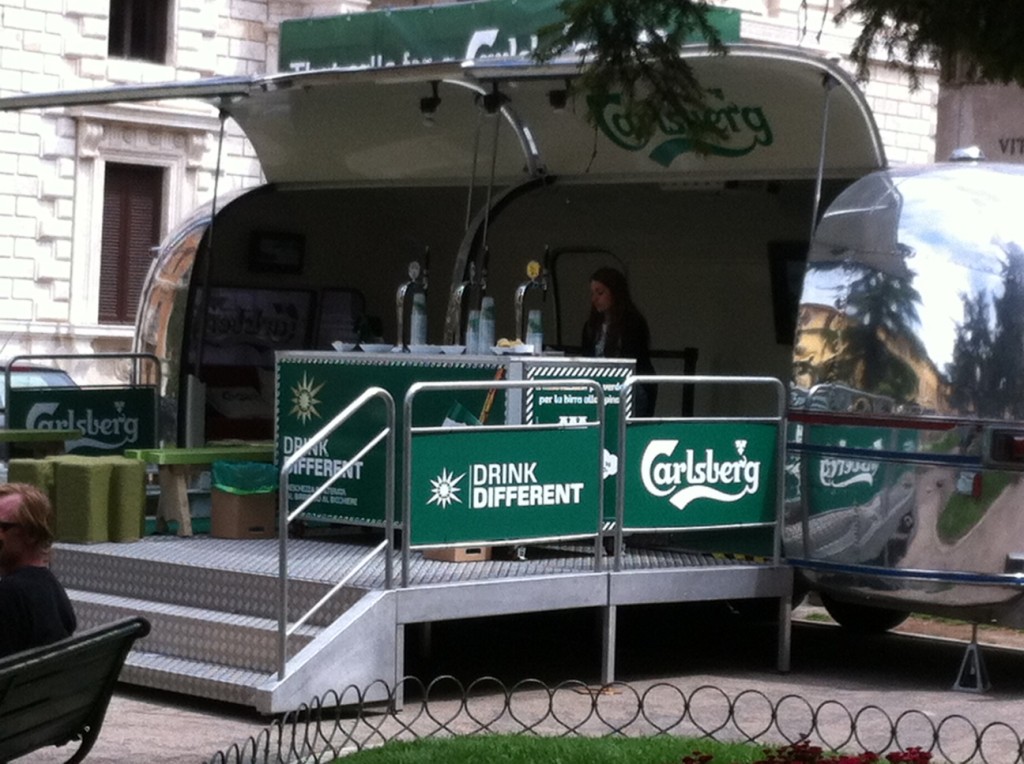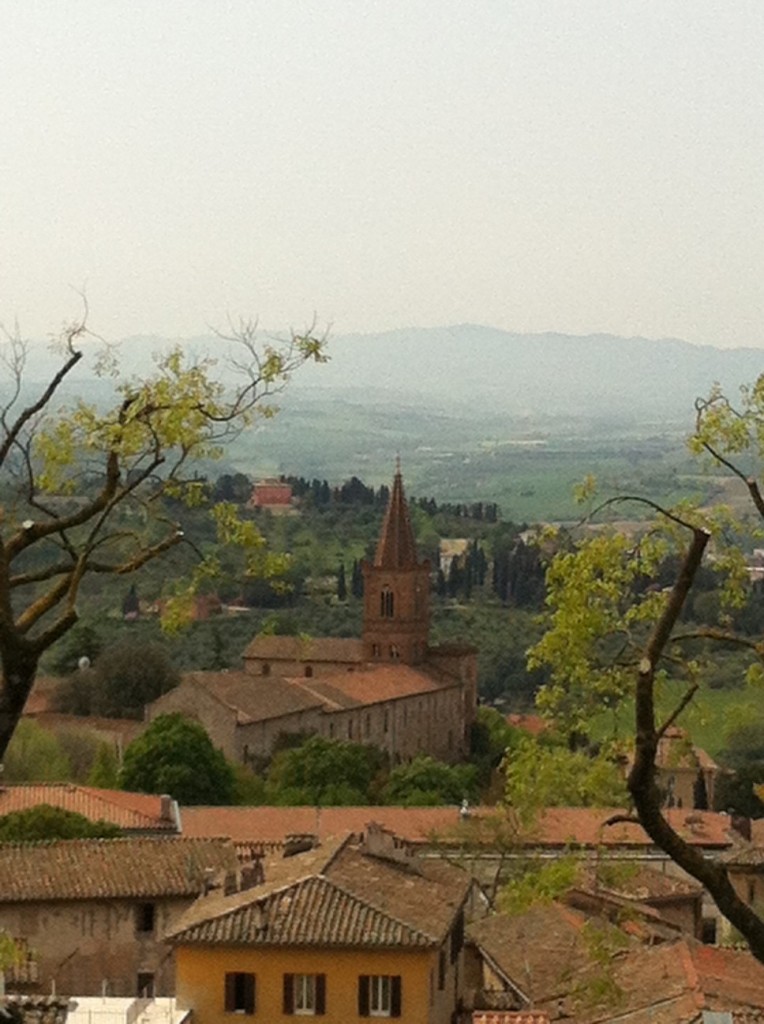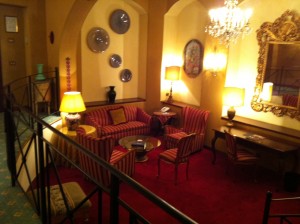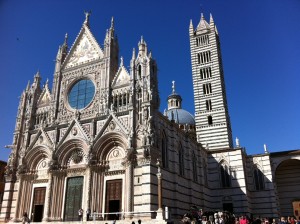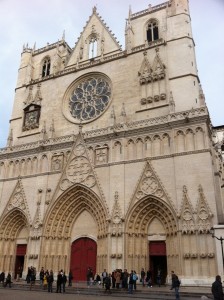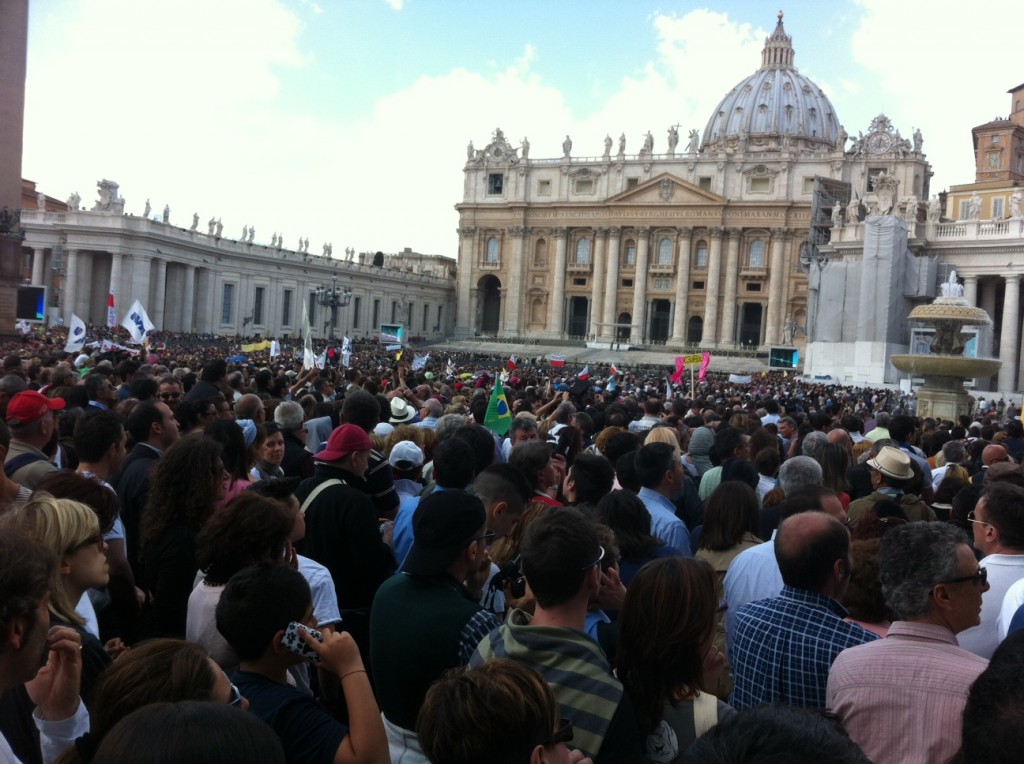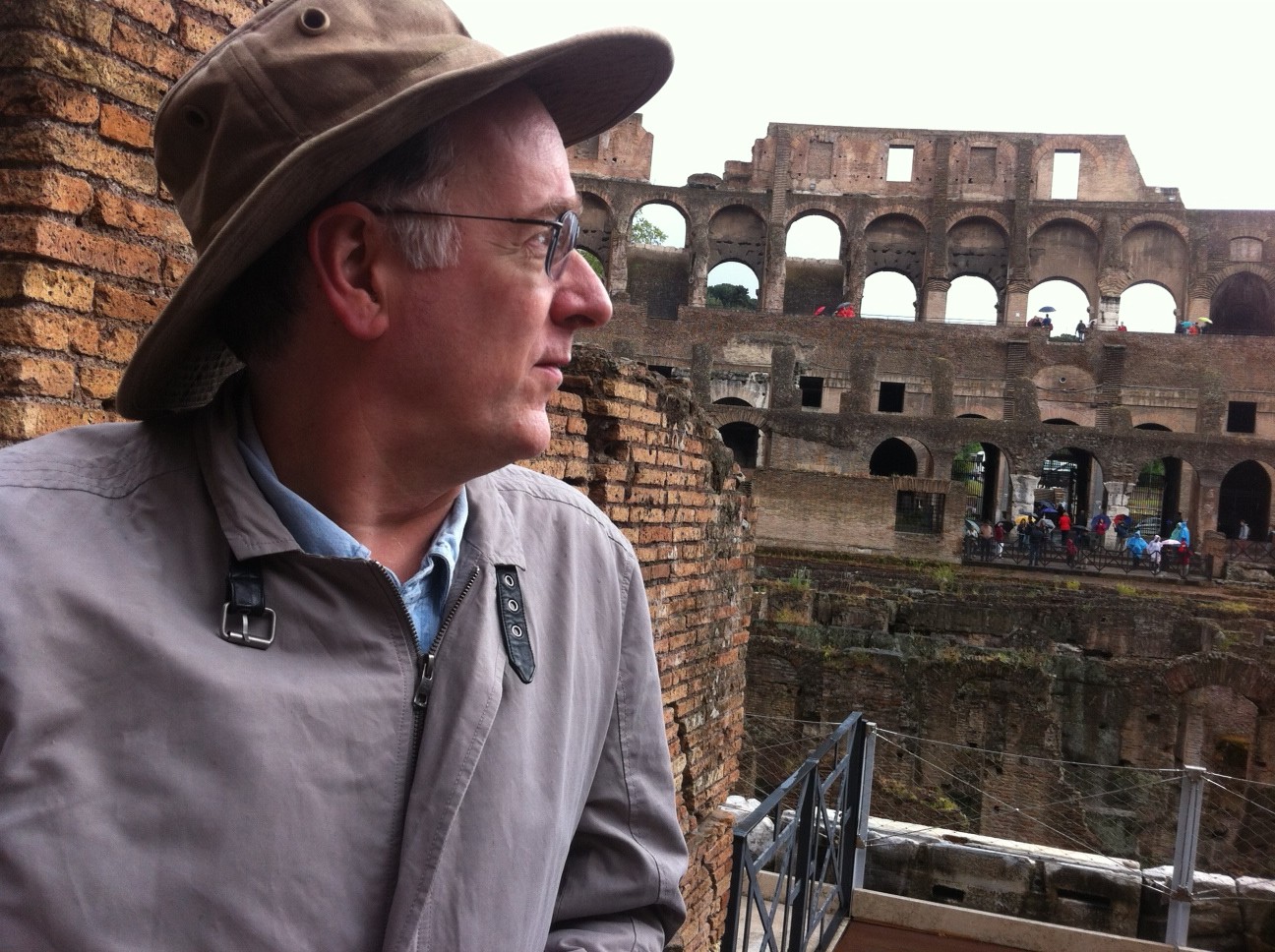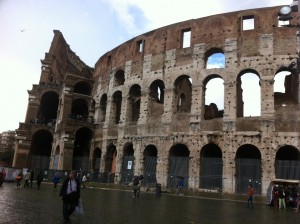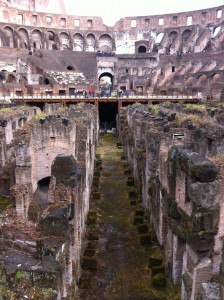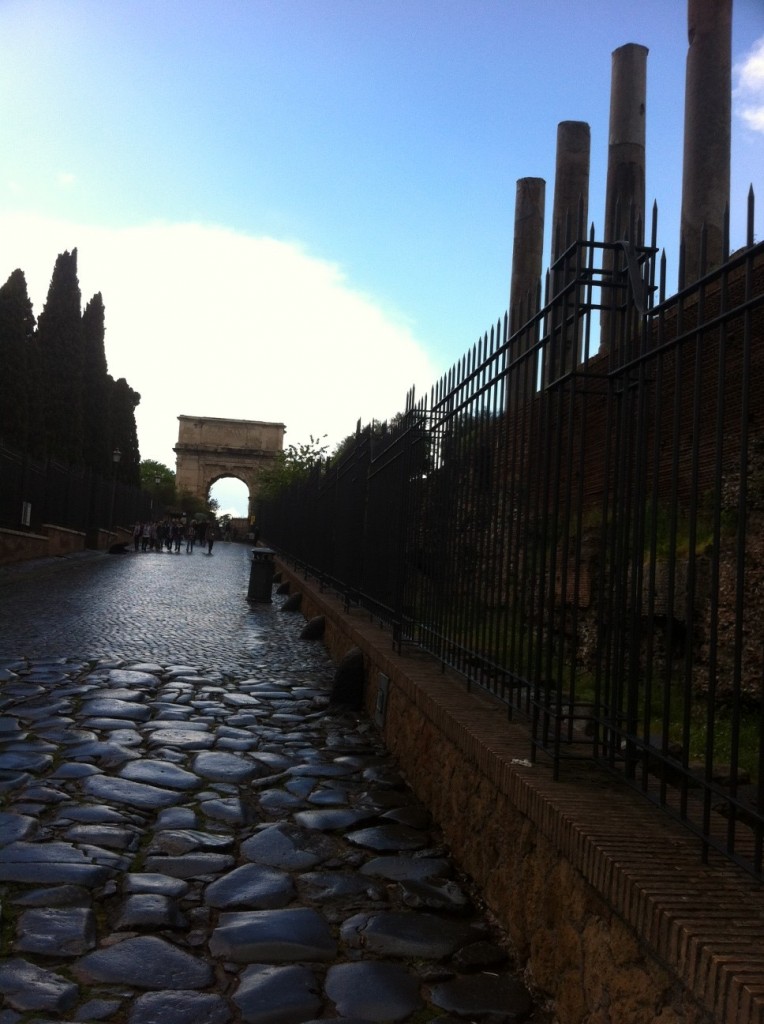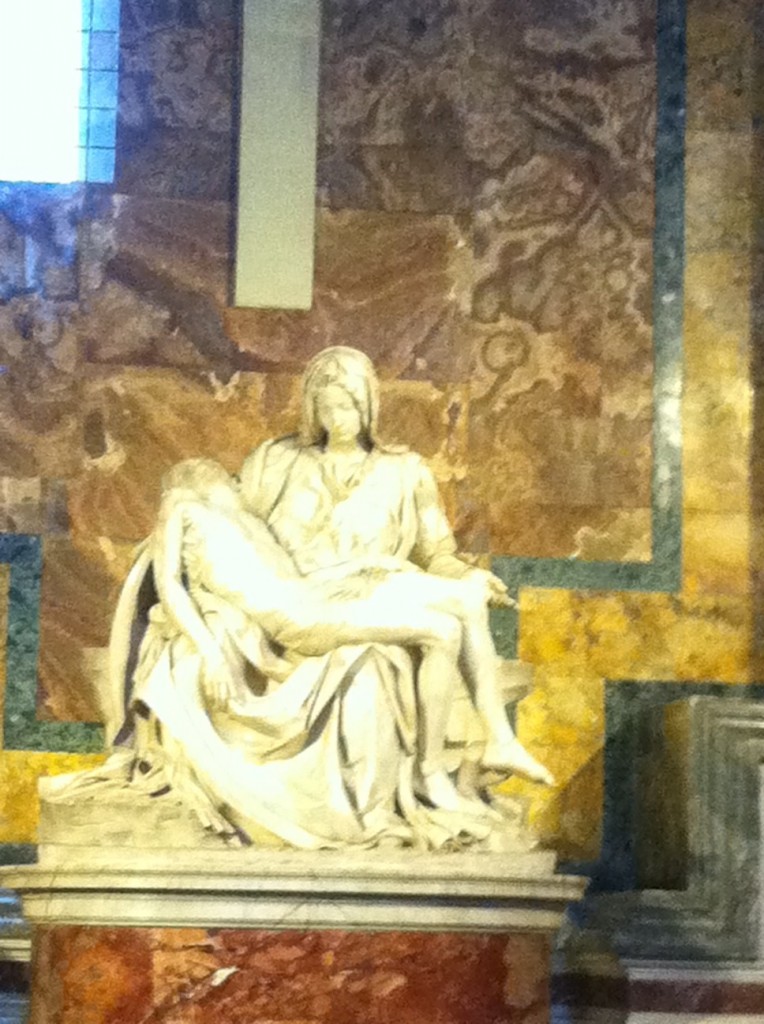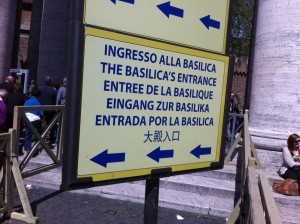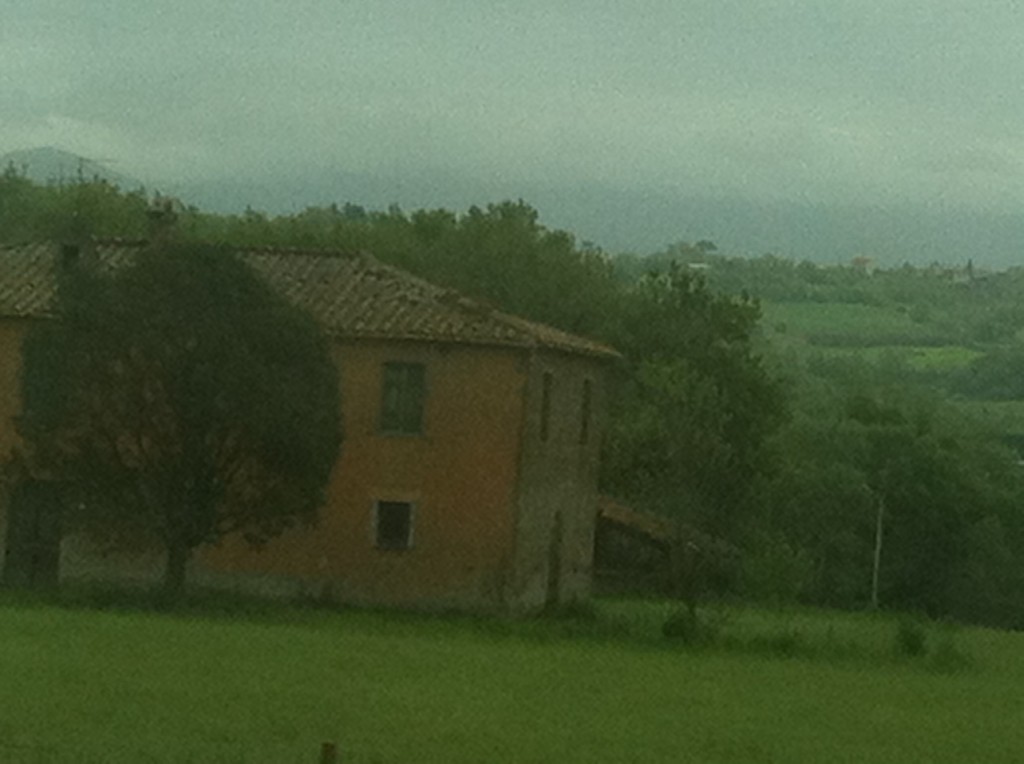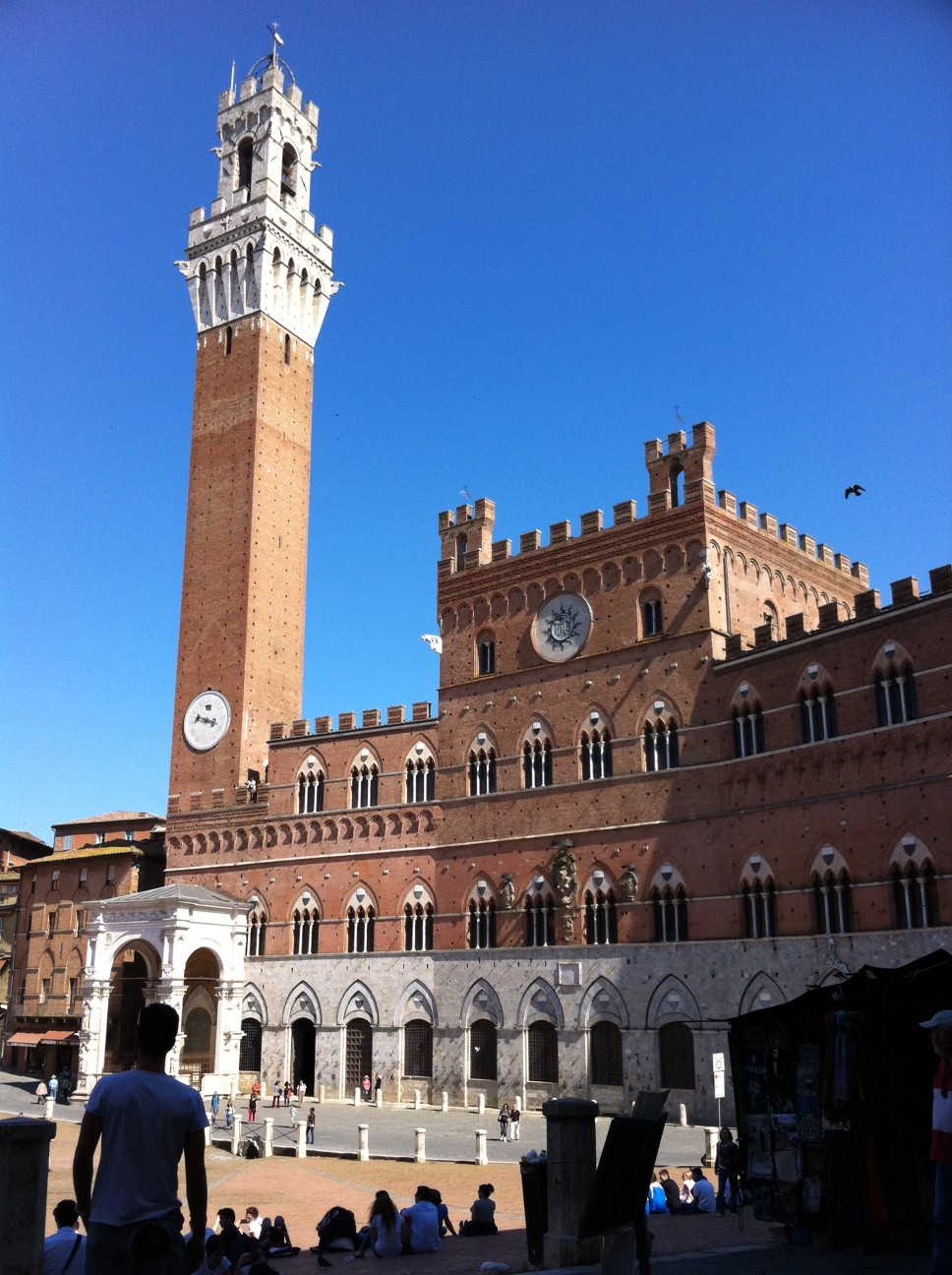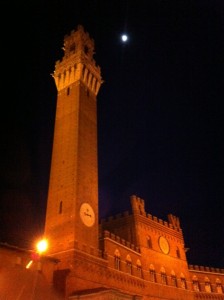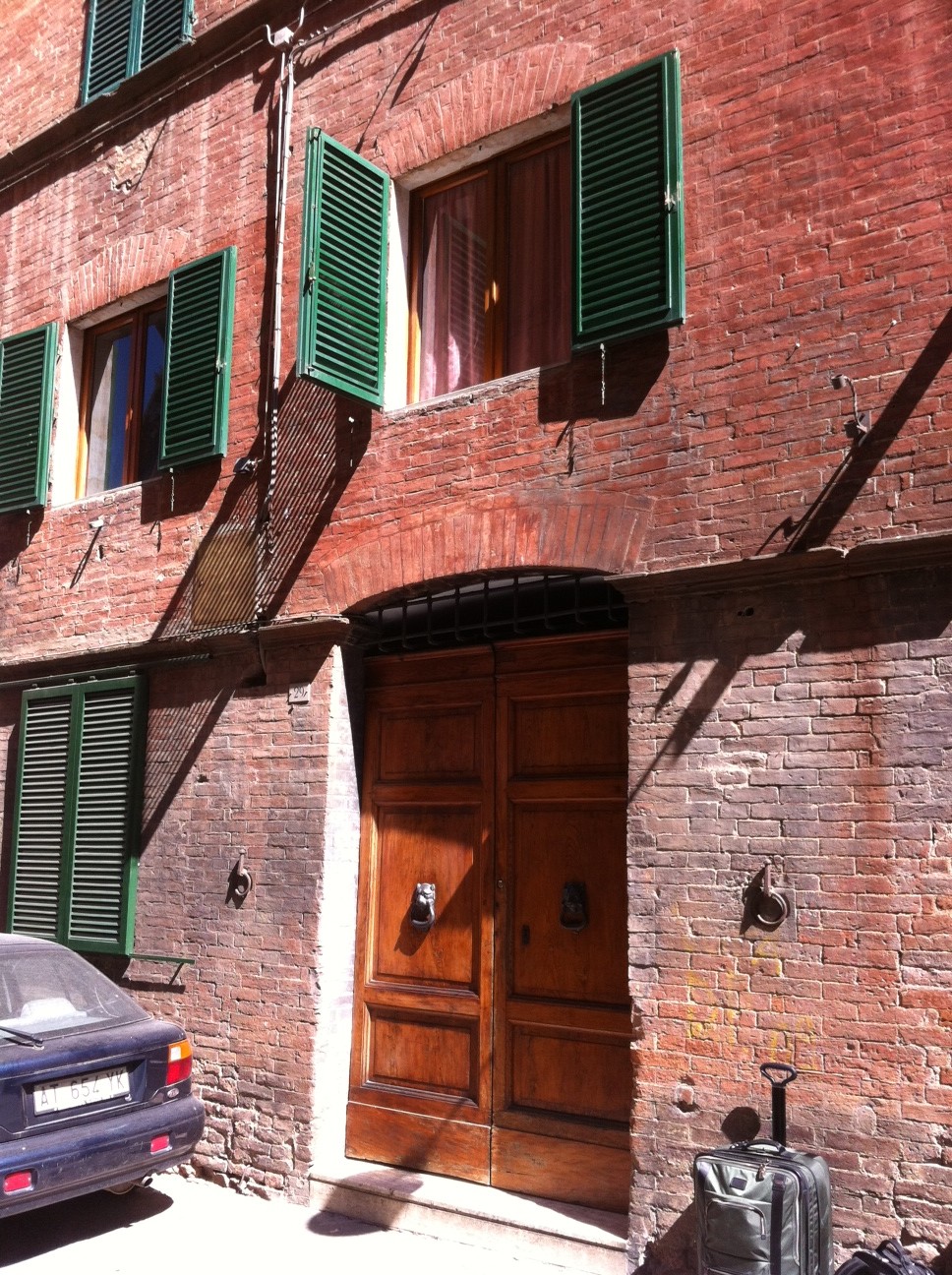This trip wasn’t meant to be a pilgrimage. But I was raised Catholic, and those ties are strong. When we were in Rome, I was thrilled and deeply touched to be in the crowd at St. Peter’s Square when Pope Francis gave an address and blessing a week ago. And as long as I was going to be in Umbria, I hoped to stop in Assisi.
It seems a higher power agreed that I should see the famous hill town. The International Journalism Festival, where my companion was speaking is held in Perugia, which is only half an hour away. For all the sightseeing we’ve done on this trip, we hadn’t joined any tours or hired any guides. So, extravagant as a personal tour was, I felt good when I lined up a guide to pick me up at our hotel, drive me to Assisi and make sure I didn’t miss anything important.
Isabella picked me up bang on time in her little BMW roadster. Her name means “beautiful one” and indeed, she is everyone’s idea of an Italian beauty with thick, wavy dark hair, wide brown eyes and fine Roman nose. Her English was superb.
The great add-on of our arrangement was the drive through the Umbrian countryside. This country is as green as Ireland, dappled with the random red of wild poppies, and dotted with squat olive trees. Symmetrically planted fields of sunflowers are just green shoots in the spring sunshine. In summer, Isabella told me, they are drifts of yellow. Hanging above this rich land are the hill towns, the ancient cities, precariously perched sentinels, standing guard as they were meant to, for hundreds and hundreds of years.
Isabella was easy to talk to, and as she drove, expertly zooming us around the heavy Perugian traffic, we shared our mutual ups and downs, inspirations and disillusionments of our common faith. We both take great significance and hope in the fact that the new Pope chose the name Francis.
The lives of St. Francis and St. Clare, and the way they intertwined, have always fascinated me. Assisi was crowded that day with large school groups and buses of tourists. But Isabella guides like she drives, an expert in short cuts, an obvious favorite with Cathedral docents and guards. We jumped the queue at several stops, she with a charming smile, me guiltily with my head down and eyes averted. But she made sure I didn’t miss a thing, and filled in some serious gaps in my knowledge of the lives of these saints. The local pink and white limestone give the Basilicas of St. Clare and St. Francis a distinct yet understated beauty, quite fitting to the lives they lived.
However much I did not come as a pilgrim, Assisi is a blessed place. My heart and spirit were filled there, in ways that are too hard to explain. Or maybe it’s just too personal. Suffice it to say I left renewed.
The drive back to Perugia was just as beautiful. Isabella respected my quiet, reflective mood. It was a day of grace and peace and my only regret was that my companion couldn’t share it with us.
Earlier posts from our trip to Europe
‘Shoulda stayed home’; Inner Skeptic Is Left Behind
The wrong train songs rumble through my head on Alpine journey
Living it up at the Hotel Europa
Reflections on the David (but no photos)
I am most fluent in helplessness
The Colosseum: definitely a Major League stadium
European churches are glorious, but whom do they glorify?

